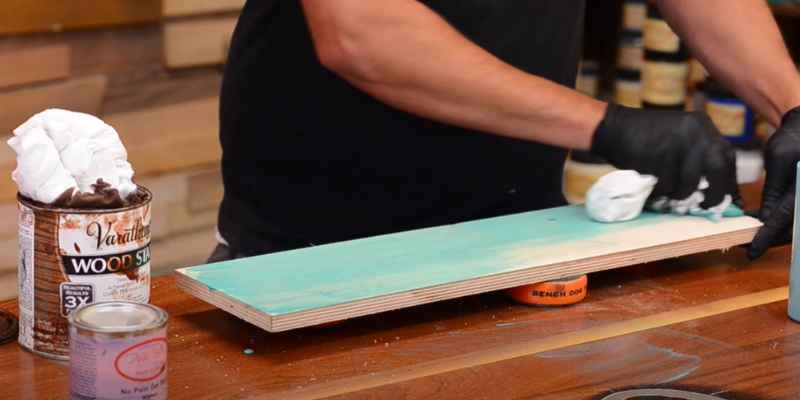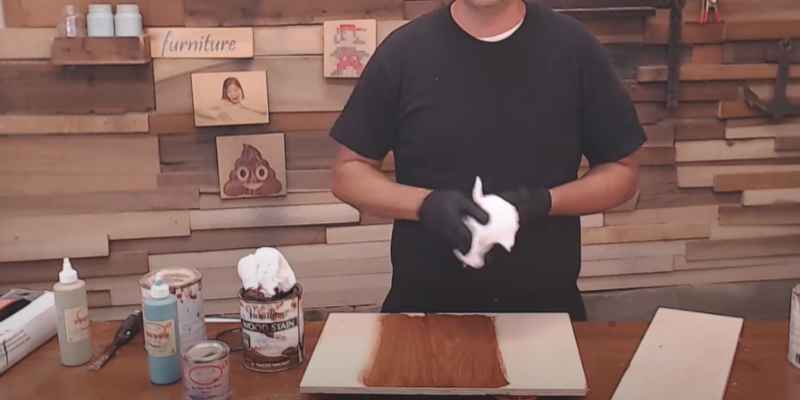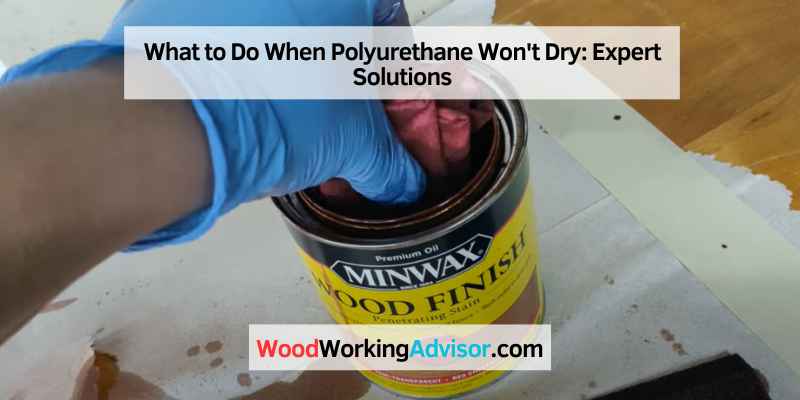If polyurethane won’t dry, you can try increasing ventilation and temperature for faster drying. Proper air circulation and warm conditions can help accelerate the drying process.
However, if the polyurethane still won’t dry, you may need to consider stripping and refinishing the surface to ensure a professional and durable finish.
Possible Reasons
When polyurethane won’t dry, it can be frustrating and leave you wondering what went wrong. There are several possible reasons why this might be happening. Let’s explore a few:
Humidity
Excessive humidity in the air can prevent polyurethane from drying properly. When the humidity level is high, moisture becomes trapped in the finish, causing it to remain tacky. To combat this issue, try operating a dehumidifier in the room where you are applying the polyurethane. This helps in reducing the amount of moisture in the air, allowing the finish to dry more effectively.
Temperature
The temperature of the room can also have a significant impact on polyurethane drying time. If the temperature is too low, the curing process may slow down, leading to a longer drying time. On the other hand, if the temperature is too high, the finish might dry too quickly, resulting in a poor quality finish. It’s important to maintain the room temperature within the manufacturer’s recommended range for optimal drying.
Improper Mixing
Inadequate mixing of the polyurethane product can cause problems with drying. If the components are not thoroughly mixed, the chemical reaction required for curing may not occur evenly. This can result in uneven drying or a tacky finish. Be sure to carefully follow the manufacturer’s instructions regarding proper mixing ratios and techniques. Take the time to stir the polyurethane well to ensure uniformity before application.

Solution: Dealing With Humidity
If you’re facing the problem of polyurethane not drying, there are a few solutions you can try to tackle the issue of humidity. Step one involves using a dehumidifier to reduce the moisture in the air, while step two suggests using a heat gun or blow dryer to speed up the drying process.
Lastly, utilizing a moisture-resistant coating or waiting for the ideal weather conditions can prove beneficial. Ultimately, these steps will help you achieve the desired results.
Check Humidity Levels
If you are facing the issue of polyurethane not drying, the first step you should take is to check the humidity levels in the surrounding area. High humidity can significantly slow down the drying process of polyurethane. Ensure that the humidity levels are below 85% before proceeding with any further steps.
Use Dehumidifier Or Air Conditioner
If you find that the humidity levels are above the recommended range, it is important to take action to reduce it. One effective solution is to use a dehumidifier or an air conditioner. These devices help in removing excess moisture from the air, creating a more suitable environment for the polyurethane to dry properly.
Place a dehumidifier or turn on an air conditioner in the room where you have applied the polyurethane. This will help in lowering the humidity levels, allowing the polyurethane to dry at a faster rate. Ensure that the dehumidifier or air conditioner is positioned strategically to cover the entire area where the polyurethane has been applied.
Remember to monitor the humidity levels continuously while the polyurethane is drying. Adjust the settings of the dehumidifier or air conditioner if needed to maintain the ideal humidity level. This will ensure that the polyurethane dries evenly and without any issues.
Solution: Adjusting Temperature
When polyurethane won’t dry, adjusting the temperature can be a solution. By controlling the temperature, you can promote faster drying and ensure a successful finish.
Ensure Optimal Temperature Range
Polyurethane not drying properly can be frustrating, but adjusting the temperature can help solve this problem. The first step is to ensure that the temperature in the room is within the recommended range for polyurethane application. The optimal temperature range usually falls between 70°F (21°C) and 80°F (27°C). If it is too hot or too cold, the polyurethane may not dry properly.
Use Heat Sources Or Fans
If the temperature is lower than the recommended range, you can use heat sources or fans to increase the temperature and promote drying. Placing portable heaters in the room can help raise the temperature. Make sure to position the heaters at a safe distance from any flammable materials.
- Place the heaters strategically to evenly distribute the heat and prevent any hot spots.
- Run fans in the room to improve air circulation and facilitate the drying process.
- Ensure that the fans are not blowing directly on the polyurethane as this may cause it to dry unevenly.
Properly adjusting the temperature can make a significant difference in the drying time and effectiveness of polyurethane. By optimizing the temperature range and utilizing additional heat sources or fans, you can ensure that your polyurethane dries thoroughly and achieves the desired finish.
Solution: Fixing Improper Mixing
When it comes to applying polyurethane, one of the common issues that you may face is the improper drying of the coating. If your polyurethane won’t dry properly, it can be frustrating and can lead to a subpar finish on your project. However, there is a solution to this problem: fixing improper mixing. By assessing the mixing ratio and retouching or recoating with properly mixed polyurethane, you can ensure a smooth and successful application.
Assess Mixing Ratio
One of the first steps in fixing improper mixing is to assess the mixing ratio of your polyurethane. This is important because an incorrect ratio can affect the drying time and overall quality of the finish. Pay close attention to the instructions provided by the manufacturer, as they will typically provide guidelines on the correct ratio to use.
If you mistakenly mixed the polyurethane with too much of one component or not enough of the other, you may need to make adjustments. Measure out equal parts of the two components and thoroughly mix them together. This will ensure a proper blend and improve the drying performance of the polyurethane.
Retouch Or Recoat With Properly Mixed Polyurethane
If you’ve already applied the polyurethane and it’s not drying properly, you may need to retouch or recoat the surface with properly mixed polyurethane. Start by sanding the surface lightly to create a rough texture that will help the new coat adhere. Remove any dust or debris from the surface before proceeding.
Next, mix a fresh batch of polyurethane according to the recommended ratio and apply it to the surface using a clean brush or applicator. Make sure to follow the manufacturer’s instructions regarding drying time and recoating intervals. Multiple thin coats are always better than one thick coat, as this allows for better drying and overall finish quality.
If you are retouching a small area, you can focus on that specific spot. However, if you are recoating the entire surface, make sure to work in small, manageable sections to ensure even coverage and an aesthetically pleasing result.
Remember to give the polyurethane ample time to dry between coats. Rushing the drying process can lead to improper drying and a compromised finish. Patience and proper application techniques are key to achieving the desired results.
In conclusion, fixing improper mixing is crucial when your polyurethane won’t dry properly. By assessing the mixing ratio and retouching or recoating with properly mixed polyurethane, you can overcome this issue and achieve a flawless finish on your project.

Preventive Measures
When it comes to applying polyurethane, nothing can be more frustrating than waiting for it to dry only to find that it won’t. To save yourself from this headache, it’s crucial to take preventive measures beforehand. By adequately preparing the surface and following the manufacturer’s instructions, you can greatly increase your chances of achieving a successful and timely finish. In this section, we will discuss two essential preventive measures: Preparation and Surface Testing.
Preparation
Proper preparation is key to ensuring the polyurethane adheres well to the surface and dries smoothly. Here are some steps you can follow:
- Clean the Surface: Begin by thoroughly cleaning the surface from any dust, dirt, or debris. A clean surface allows for better adhesion and helps the polyurethane to dry evenly.
- Sand the Surface: If the surface is rough or uneven, sanding it will help create a smoother canvas for the polyurethane. Use sandpaper with an appropriate grit for your project and be sure to remove any dust afterwards.
- Use a Tack Cloth: Prior to applying the polyurethane, wipe down the surface with a tack cloth to remove any leftover dust or particles. This step will contribute to a flawless finish.
- Control Temperature and Humidity: Polyurethane dries best in an environment with controlled temperature and humidity. Ideally, the temperature should be around 70°F (21°C) with a humidity level between 50-60%. Any extremes in these conditions can affect the drying process.
Surface Testing
Before proceeding with coating your entire surface, it’s advisable to conduct a surface test to ensure compatibility and proper drying. Follow these steps:
- Apply a Test Coat: Choose a small, inconspicuous area on your surface and apply a test coat of polyurethane. Follow the recommended drying time mentioned by the manufacturer.
- Observe the Results: Once the drying time has passed, carefully inspect the test coat. Look for any signs of incomplete drying, such as stickiness, tackiness, or cloudiness. If the results are unsatisfactory, it’s better to address the issue before proceeding with the entire surface.
- Adjust According to Results: If the test coat hasn’t dried properly, try adjusting the temperature and humidity, or consider using a different batch or brand of polyurethane. This step allows you to troubleshoot any potential problems and find the right solution before committing to the whole project.
By taking these preventive measures, you can minimize the risk of polyurethane not drying properly. Preparation and surface testing are essential steps to ensure a successful application and achieve the desired finish.
Conclusion
If you’ve been dealing with the frustration of polyurethane that won’t dry, don’t despair. By following the steps mentioned in this blog post, you can troubleshoot and find solutions to your drying problems. Whether it’s ensuring proper ventilation, allowing enough drying time, or using the right type of polyurethane, there are various approaches to explore.
Remember to always read the instructions and seek professional advice if needed. So, arm yourself with knowledge and tackle this issue head-on to achieve the desired results for your project.


